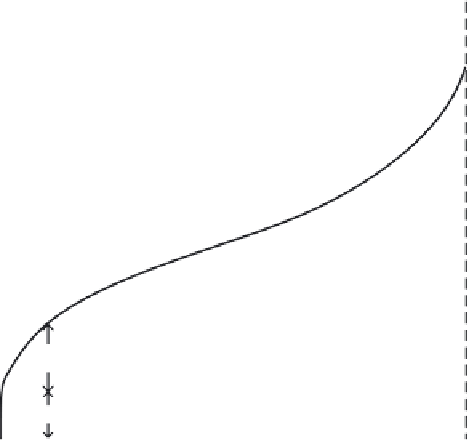Environmental Engineering Reference
In-Depth Information
Tertiary
(unstable)
Rupture
Secondary
(steady-state)
~
constant
σ
Primary
(transient)
ε
sc
ε
c
ε
e
+
ε
p
0
t
, Time
4.68
Strain vs time behaviour during creep under constant load, and
the three stages of creep.
important parameters infl uencing creep strains and rates. A tertiary stage is
not reached except in very rare, localized high stress cases.
In-reactor creep of any component or specimen consists of three parts:
(1) thermal creep (which in most practical cases is small, and in all cases is
different from thermal creep of unirradiated material), (2) true irradiation
creep and (3) irradiation growth. The most common practice is to assume
that the three parts are independent and additive, although from a mecha-
nistic view this is questionable. In data analyses, only in-reactor creep has
been analysed typically, without any separation of thermal and irradiation
creep components; if possible, any irradiation growth should be subtracted
from the experimental creep me
a
surements.
The steady state creep rate,
, is most often expressed as a function of
ε
variables:
Q
RT
d
d
t
ε
−
A
[4.2]
ε
(,
p
pn
σ
,)
f
φ
e
fG
ρ
==
σ
e
,
G
and in-reactor strain,
ε
, is often expressed for a specifi c alloy and alloy con-
dition as:
Q
RT
−
[4.3]
A
()
φ
mn
σ
ε
t
σ
e
























Search WWH ::

Custom Search